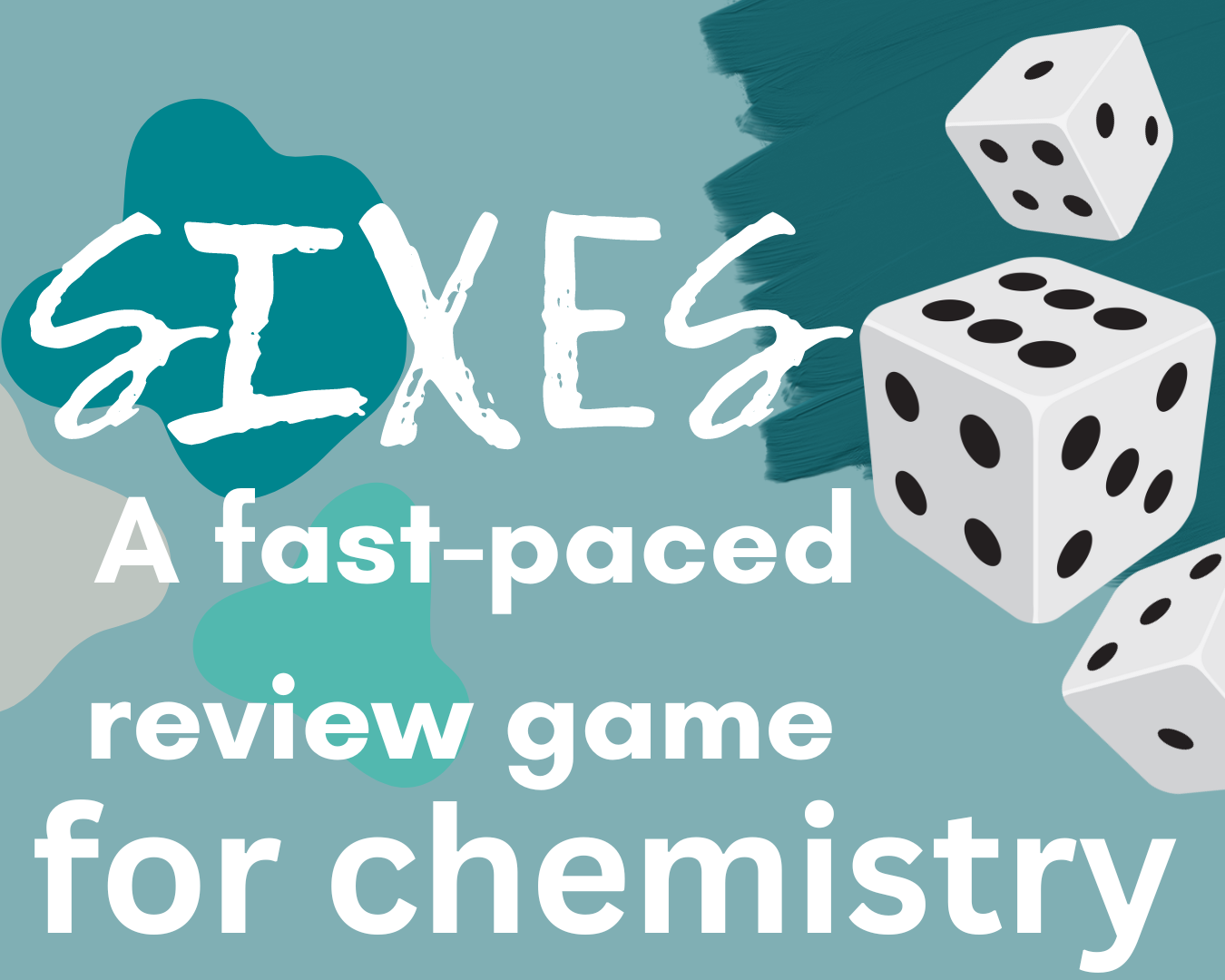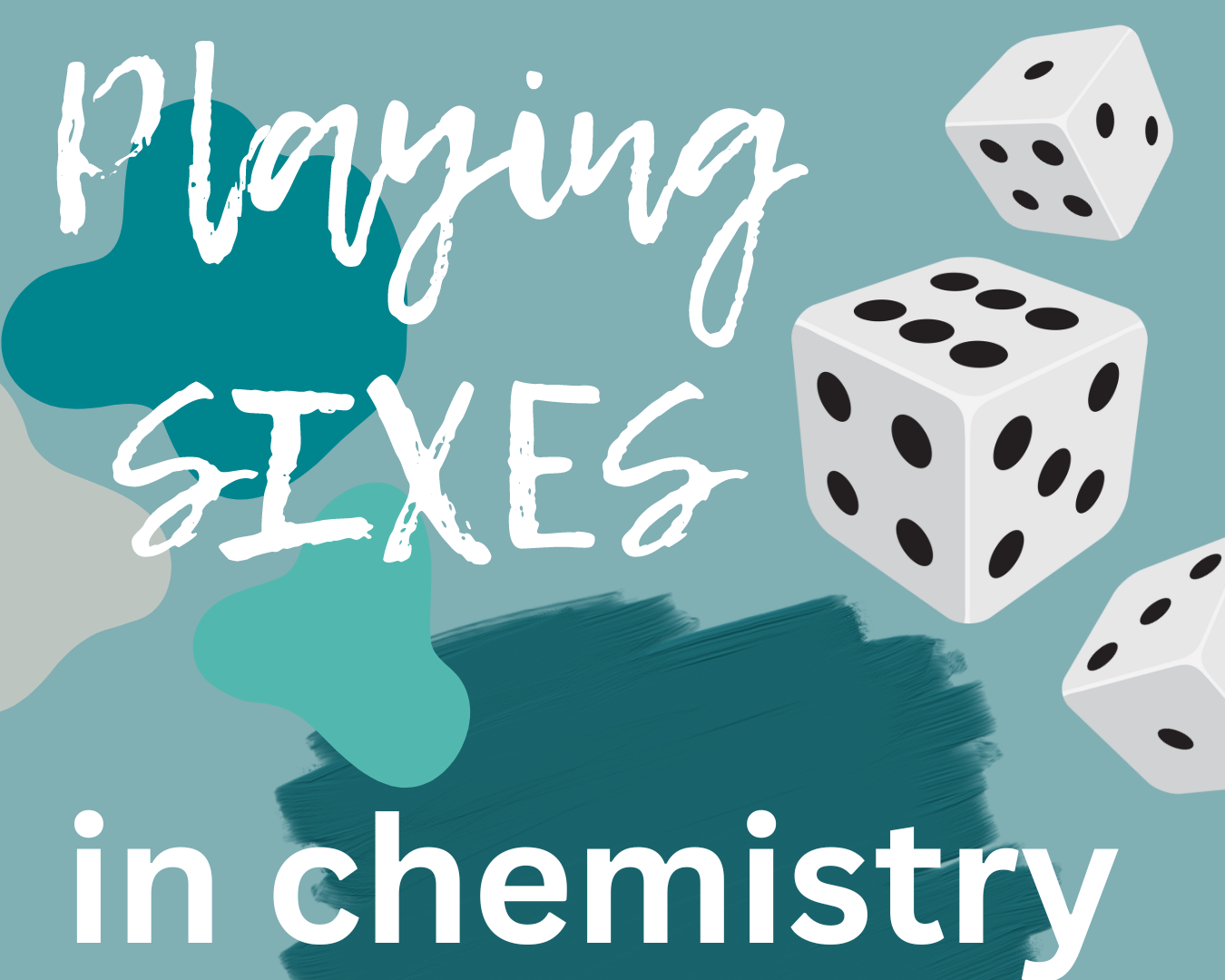Sixes: A Fast-Paced Review Game for Chemistry
Once again, I was looking through Pinterest, and came across the game SIXES. The post I found was written by an English teacher, but the game is so readily adapted for various content areas. As I was reading, I thought: this could be made into a chemistry game too! All it takes to modify a game or activity is a little creativity and thinking outside of the box.
SIXES: The Basics.
Groups of students will race to be the first to complete some sort of task. In chemistry, this could be a task such as finding the answer to a stoichiometry problem, or predicting the products of a chemical reaction when given the reactants. The end result should be a specific answer-whoever completes the task first (and correctly) will be the winner!
SIXES: How to Play.
Split students into groups of 3-5.
Give each student in the group a die. This means you need a die for each student in your class. Also have each student have a piece of scratch paper.
Give each group only ONE writing utensil.
Have all students in a group sit/stand around the exterior of a table or in a circle on the floor. Each student should place their paper in front of them, and the pencil will be kept in the middle of the circle.
All students roll their die at the same time. When a student rolls a six, they will yell “six,” and grab the pencil from the middle of the circle. That student begins writing the answer to the task on their paper.
As that student is writing, the remaining students will continue to roll their dice. As soon as another student rolls a six, they will yell “six,” and grab the pencil from the student that was previously writing, even if that person was not done.
The new owner of the pencil will start working on the answer. All other students continue rolling their dice in an attempt to get a six so that they can grab the pencil. The original person (who first got a six), will start rolling their die as well, in an attempt to get the pencil back.
The students will keep playing until one student can manage enough time with the pencil to finish the task. If it is accurate, the student wins that round! If not, they keep rolling and trading the pencil until someone gets it right, or the student can correct it.
SIXES: Ideas for chemistry content.
There are many tasks that could be used with SIXES in chemistry class. Any three-variable math problem would work. You could also do mole conversions, and stoichiometry problems. There are many math-related problems that could be used. But you don’t don’t have to use math problems. You could also have students predict the products of a chemical reaction. Students could write a net ionic equation. Students could also be asked to diagram something on the particulate level, or write electron configurations. The possibilities in chemistry are endless!
Thanks so much for reading! Let me know if you’ve used SIXES before in your class, and let me know how it went. If you haven’t used it before, let me know if you plan on trying it out. Connect with me on Instagram. Happy teaching!



